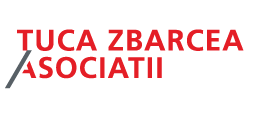The development of Romania’s infrastructure must make smart use of the EUR 30 billion anticipated from EU’s Recovery and Resilience Facility, as the expansion and modernization of Romania’s transport infrastructure are of paramount importance not only for the country, but for the entire EU, given Romania’s geo-strategic position at Europe’s maritime borders with Asia.
Four corridors for transport passing through Romania are of great strategic and economic importance for the country and EU alike: (a) the Pan-European Corridor IX, connecting Western Europe to the Black Sea, essentially using the Danube River as a vector; (b) the Rail-to-Sea corridor, providing a rail connection from the Baltic Sea (Gdansk Port) to the Black Sea (Constanta Port); (c) the Three Seas Initiative, ensuring a motorway connection from the Baltic Sea to the Black Sea (Constanta Port), and (d) the Caspian–Black Sea Corridor, an alternative to China’s BRI, connecting Central Asia to Western Europe via Caspian Sea ports in Turkmenistan and Azerbaijan and Black Sea ports in Georgia and Romania. These transportation corridors will not only ensure further connectivity and geo-political independence for the EU but will also unlock bottlenecks in merchandise flows from Asia to Europe and inside the EU.
Inland navigation represents more than 20% of total transport in Romania. Bottlenecks and low water levels are the main hindrances for the use of the Danube River corridor. The main goal of local and EU planning is to ensure navigation conditions on the Romanian-Bulgarian common sector of the Danube for safely conducting transport on the Danube throughout the entire year. In addition, Romania plans to prioritize the digitalization of the entire water transport system.
Port infrastructure projects are on the rise, as traffic volumes in Constanta Port continue to increase, despite the pandemic. The port management body has taken a more active role, speeding up investments (including dredging and infrastructure modernization), and several private investment projects were launched as well. Also, recent amendments to framework port law OG no. 22/1999 provide for a stable, predictable environment for fresh investments.
The status of Romania’s rail network is not encouraging – infrastructure is undersized, poorly maintained, and characterized by poor connectivity and a lack of inter-modality. The requirement for modernization generates an estimated funding need of EUR 13.5 billion for the next five years, according to Romania’s National Recovery and Resilience Plan (PNRR). This generates great potential for players in the rail construction field and for rail component manufacturers. 2020 has seen an impressive push from the authorities’ side in terms of speeding up public tender processes and streamlining public contract management – we particularly note the active role taken by DGOIT (the management body of EU funds for transport/mobility projects) in helping work advance at a faster pace than it has previously.
While air transportation has taken the biggest hit during the pandemic, local airport infrastructure projects were not halted. Procedures for granting the concession of the operation of the Brasov International Airport – the only greenfield investment in this field in the past 50 years – are ongoing and flights are expected to launch this year. The development of Otopeni International Airport’s second terminal is also moving forward – expropriations were finalized and work could start in 2021 if financing, estimated to exceed EUR 500 million, is secured.
Systemic transformation and modernizing are necessary and expected. Following the models of the Antwerp and Zeebrugge ports, the merger between the authority managing the Danube-Black Sea Canal and the Port Authority of Constanta (CNAPM) is expected to resolve issues concerning tariffs and the tax regime applicable to goods in transit, while strengthening the position of the Constanta Port within the regional supply chain.
BVB outperformed all the other EU markets in 2021, with a post-pandemic increase of 48%. Timing could be good for the intended IPOs of transport state owned enterprises like Tarom (the national flag carrier), CNAPM, and CNAB (the Otopeni Airport authority).
Digital transformation will be one of the main drivers of growth in the field: PNRR proposes EUR 4 billion for digital transformation – 20% of the entire value of the plan. Digitalization of transport infrastructure and operation is pivotal. Under PNRR, Constanta Port will receive a budget of more than EUR 20 million for that purpose. The main scope is integrating the Maritime National Single Window with the Port Community System. Moreover, some subsequent investments are meant to harmonize the RFD Directive with the VTMIS Directive.
While Romania does have a grey history as regards implementation of infrastructure projects, recent years have seen notable improvements, with authorities taking up a more active role, and legislation adapting, all in all contributing to a better investment environment in the country.
By Andreea Hulub and Lucian Danilescu, Partners, Danilescu Hulub & Partners
This Article was originally published in Issue 8.3 of the CEE Legal Matters Magazine. If you would like to receive a hard copy of the magazine, you can subscribe here.




